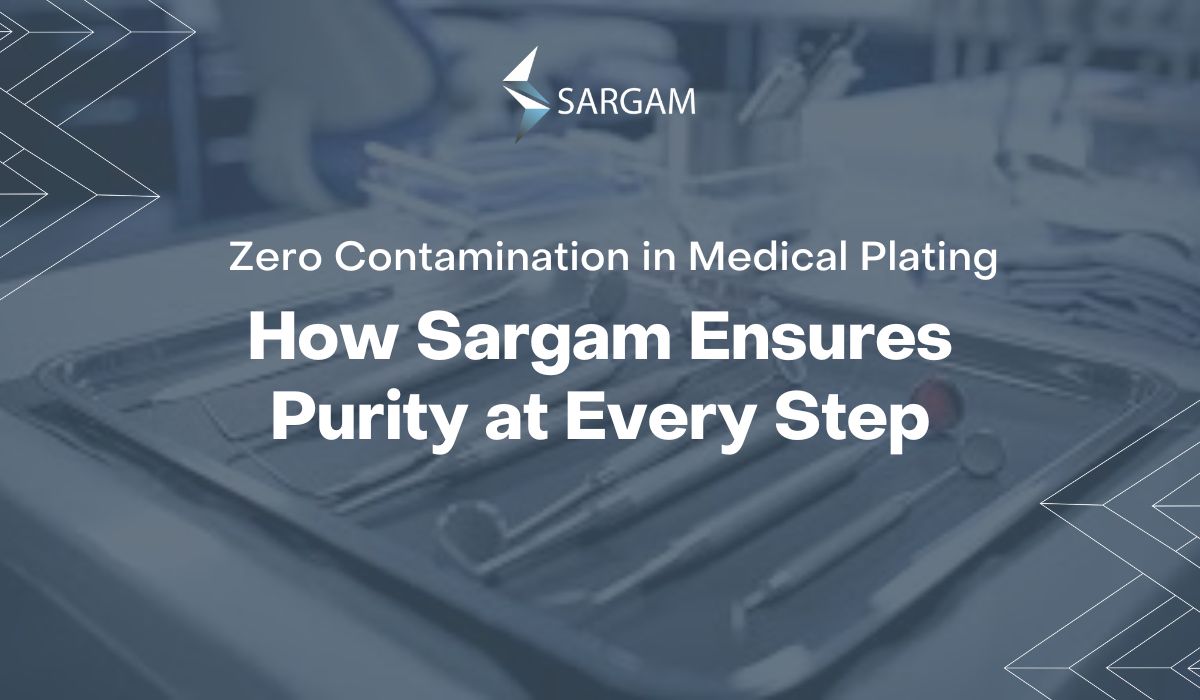Cleanliness Beyond the Surface
In healthcare, cleanliness doesn’t end with sterilization, it begins at manufacturing.
Every connector, sensor, or surgical instrument that undergoes plating must meet strict cleanliness and biocompatibility standards before it ever reaches a hospital or lab.
That’s why contamination control is one of the most critical and often overlooked aspects of medical component plating.
Even microscopic impurities can affect adhesion, conductivity, and biocompatibility, compromising both device performance and patient safety.
Why Contamination Control Matters
Plating is a chemical process. Every solution, mask, and rinse bath contributes to the final surface finish.
When these baths are used for multiple applications or mixed materials, the risk of cross-contamination increases introducing unwanted elements like copper, nickel, or organic residues into the deposit.
In the healthcare sector, such contamination can lead to:
- Reduced adhesion between layers
- Surface discoloration or dullness
- Inconsistent conductivity in signal transfer parts
- Potential biocompatibility concerns
- Maintaining chemical purity and process segregation is therefore non-negotiable for medical plating.
Dedicated Lines for Healthcare Applications
At Sargam Industries, medical plating isn’t an extension of industrial production, it’s a dedicated, controlled environment.
Our healthcare plating lines are designed to maintain zero cross-contamination through:
- Separate baths and rinses for medical components
- Dedicated filtration and solution monitoring systems
- Controlled temperature and agitation for bath stability
- Strict masking and handling protocols to prevent particulate introduction
This segregation ensures that the silver deposited on medical components is chemically pure, uniform, and stable, ready for use in critical environments.
Surface Preparation Defines Purity
Contamination control starts much before plating.
Each component undergoes a multi-stage pre-treatment cycle including ultrasonic cleaning, degreasing, and acid pickling to remove oils, oxides, and surface films that could interfere with plating adhesion and make the surface conductive
The goal is to achieve a surface that’s chemically active but contamination-free.
Post-plating, components are cleaned again, inspected under magnification, and packaged in controlled environments to preserve surface integrity until assembly.
Validation and Traceability
For healthcare applications, documentation is as critical as the process itself.
Sargam maintains traceable records for every plating batch, including:
- Bath analysis reports
- Temperature and pH logs
- Visual inspection data
- Adhesion and thickness test records
This ensures full traceability, a key requirement for OEMs supplying to medical or pharmaceutical markets FDA, CE, or ISO 13485–certified markets.
Contamination Control as a Competitive Advantage
In industrial plating, contamination affects finish.
In healthcare plating, it can affect trust.
That’s why every step from solution maintenance to final inspection is performed under defined protocols.
By maintaining contamination-free lines, Sargam delivers biocompatible, corrosion-resistant, and high-conductivity finishes that meet the performance and regulatory needs of modern medical devices.
Conclusion: Clean Processes, Safe Outcomes
In the world of healthcare, clean surfaces start with clean processes.
At Sargam Industries, contamination control isn’t an additional measure; it’s built into the system.
Because for components that power life-saving technologies, even a trace of impurity is one too many.

